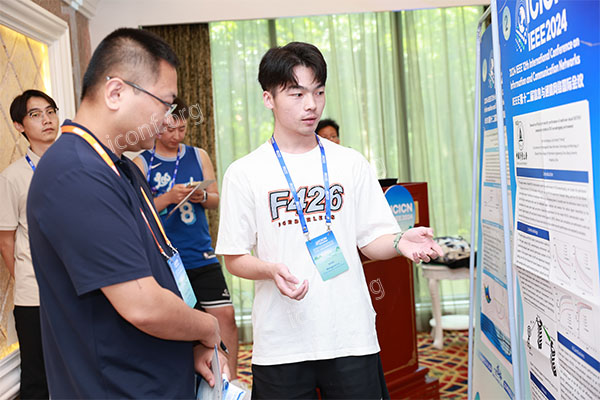

404 views||Release time: Aug 14, 2025
A successful conference submission can be a pivotal moment in an academic or research career. It's an opportunity to share your work with a global audience, receive valuable feedback, and build crucial professional connections. However, the path from a completed manuscript to a "Congratulations on your acceptance!" email can be fraught with potential pitfalls. This comprehensive guide will demystify the conference submission process, providing a step-by-step roadmap to maximize your chances of acceptance.

Before you even think about the submission portal, the most critical step is to identify the right conference. A mismatch between your paper's topic and the conference's theme is a common reason for desk rejection.
Align Your Research: Scrutinize the conference's call for papers (CFP), theme, and the topics of previous years. Does your research seamlessly fit within their scope? Is your work groundbreaking enough for a top-tier, highly competitive conference, or would a smaller, more focused symposium be a better fit for a work-in-progress?
Reputation and Reach: Investigate the conference's reputation. Is it organized by a prestigious academic or professional body? Are the proceedings indexed in reputable academic databases like IEEE Xplore, ACM Digital Library, or Scopus? This is crucial for the long-term impact of your work.
Audience and Networking: Consider who attends the conference. Will you be presenting to your direct peers, a multidisciplinary audience, or industry professionals? The right audience can provide the most relevant feedback and networking opportunities.
Once you've chosen your target conference, meticulously dissect their submission guidelines. Overlooking these details is a frequent and easily avoidable mistake.
Formatting is Non-Negotiable: Pay close attention to prescribed templates (e.g., Word, LaTeX), font styles and sizes, margins, line spacing, and referencing style (e.g., APA, MLA, Chicago). Many conferences use automated tools to check for compliance, and a formatting error can lead to an immediate rejection.
Anonymity and Blind Review: Many academic conferences employ a double-blind review process. This means that both the authors' and the reviewers' identities are concealed. Ensure you remove all identifying information from your manuscript, including author names, affiliations, and acknowledgements. Check the properties of your document file as well.
Deadlines are Absolute: Conference deadlines are notoriously inflexible. Note the submission deadline (and the time zone!) in your calendar and aim to submit at least a day or two in advance to avoid any last-minute technical glitches.
With the logistical groundwork laid, it's time to focus on the content of your submission.
The abstract is your paper's elevator pitch. In a few hundred words, it must convince reviewers of your research's value. A strong abstract typically includes:
Motivation: Briefly introduce the research problem and its significance.
Problem Statement: Clearly state the specific question your research addresses.
Methodology: Concisely describe your approach to solving the problem.
Results: Summarize your key findings.
Conclusion: Briefly state the implications of your work.
A well-structured paper is easier for reviewers to read and comprehend. A standard conference paper generally follows this format:
Introduction: Provide background information, state your research question, and outline the paper's structure.
Literature Review: Situate your work within the existing body of knowledge, highlighting the gap your research fills.
Methodology: Detail your research methods with enough clarity that another researcher could replicate your study.
Results: Present your findings in a clear and logical manner, often using tables and figures.
Discussion: Interpret your results, discuss their implications, and acknowledge any limitations of your study.
Conclusion: Summarize your key contributions and suggest avenues for future research.
References: Meticulously cite all sources according to the conference's specified style.
Before you hit that "submit" button, run through this final checklist:
[ ] Proofread Meticulously: Typos and grammatical errors can undermine your credibility. Read your paper aloud, use grammar and spell-checking software, and, if possible, have a colleague review it.
[ ] Get Feedback: Share your draft with trusted colleagues or mentors. A fresh pair of eyes can often spot weaknesses or areas for improvement that you may have missed.
[ ] Verify All Components are Included: Ensure you have all the required files, such as the main paper, a separate title page (for blind review), and any supplementary materials.
[ ] Double-Check Anonymity: If it's a blind review, do one last check to ensure all identifying information has been removed.
[ ] Confirm File Formats: Make sure your files are in the correct format (e.g., PDF, .docx) as specified by the submission system.
After submission, your paper will undergo a peer-review process. This can take several weeks to a few months. You will then receive one of three outcomes:
Accepted: Congratulations! Prepare your presentation and register for the conference.
Accepted with Revisions: You will be asked to make some changes to your paper before it is officially accepted. Address the reviewers' comments thoroughly and resubmit by the deadline.
Rejected: While disappointing, rejection is a common part of the academic process. Carefully read the reviewers' feedback to understand their concerns. This feedback can be invaluable for improving your paper for submission to another conference or a journal.
By following this comprehensive guide, you can navigate the conference submission process with confidence, significantly increasing your chances of sharing your valuable research with the world.